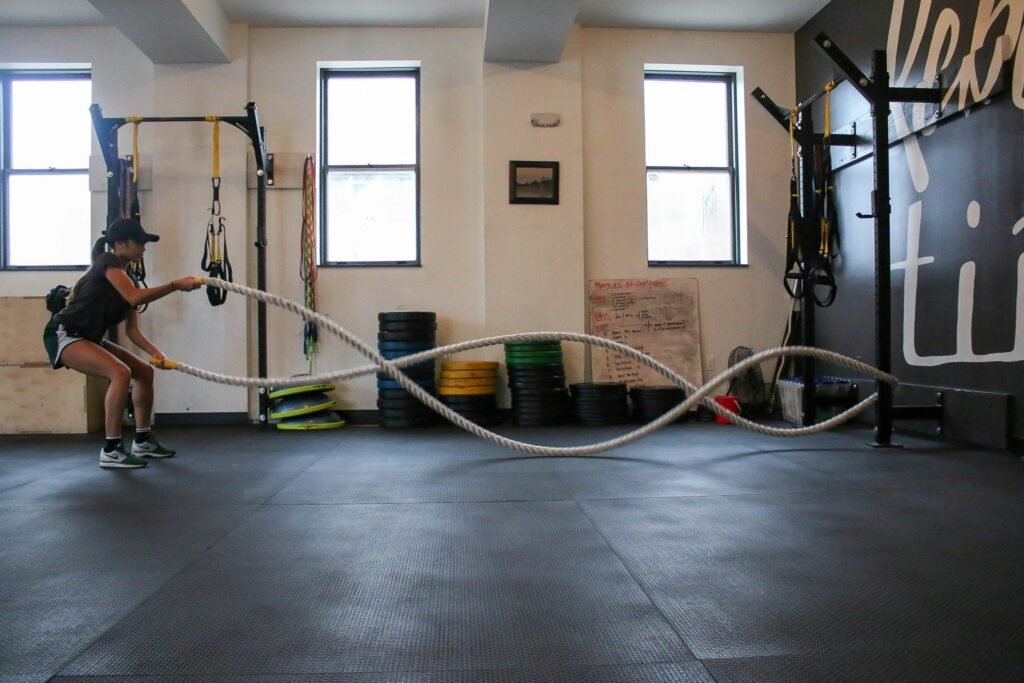
When I first embarked on my fitness journey, I quickly learned that working out is only half the battle. The other half revolves around understanding how to keep your heart healthy while getting fit. That made me delve deeper into heart health and its crucial role in fitness, prompting me to uncover practical, beginner-friendly tips that can significantly impact your journey. So, if you’re ready to breathe life into your workout routines without straining your heart, let’s dive into these heart-healthy tips!
Understanding Heart Health: The Foundation of Fitness
Have you ever thought about how your heart influences your overall well-being? Heart health is profoundly linked to our wellness. It’s not just about dodging heart disease; it’s about feeling energetic and ready to tackle each day. We all want to live long, vibrant lives. But understanding heart health is the first step toward achieving that.
The Link Between Heart Health and Overall Wellness
Every heart pump is crucial. It delivers oxygen and nutrients throughout our bodies. When our hearts are healthy, we feel lively and can perform our daily activities efficiently. Yet, many people overlook this. They think, “I’m fit; I’m safe.” But is that really true?
Heart disease continues to be a leading cause of death. In fact, over 695,000 Americans died from heart disease in 2022 alone! That’s a staggering number that should make us pause. We can’t ignore this silent enemy. The heart isn’t merely a muscle; it impacts our energy levels and performance during workouts.
Common Misconceptions About Fitness and Heart Health
It’s time to debunk some myths. Many believe that only athletes need to worry about their heart health. This couldn’t be further from the truth! We should all prioritize it, especially beginners. A newbie at the gym might think, “If I can lift weights, I’m fit.” But what about cardiovascular health?
Strength training is vital, but regular aerobic activity is equally key. Activities like walking, running, or cycling can significantly lower the risk of heart disease. While lifting weights strengthens muscles, aerobics fortify our hearts. By incorporating both, we pave the way for a healthier future.
Why Beginners Should Prioritize Heart Health
For those just starting their fitness journey, it’s critical to focus on heart health. You might wonder, “Why focus on this first?” A strong heart improves our workouts and daily activities. Plus, it can motivate us to keep going. Imagine hitting the gym feeling well-rested and energetic!
I like to remind myself, “Your heart is your most vital muscle—treat it well and it will carry you through life!” We should view our fitness journey as a long-term commitment to ourselves. Neglecting our heart impacts not just exercise but our quality of life.
“Your heart is your most vital muscle—treat it well and it will carry you through life!” – Unknown
Incorporating heart health into your fitness routine is essential. It builds a solid foundation for everything else. Remember, it’s not about the weight you lift but how well you care for your heart.
Tip #1: Incorporate Cardiovascular Exercises

When we talk about getting fit, cardiovascular exercises are often at the forefront of our minds. They’re essential for heart health, weight management, and overall well-being. So, what types of cardiovascular exercises should we consider? Let’s break it down.
Types of Cardiovascular Exercises to Consider
- Walking: A simple yet effective way to get moving. You don’t need a gym for this.
- Cycling: Whether on a stationary bike or outdoors, cycling can be exhilarating and beneficial.
- Swimming: Great for people of all ages. It provides a full-body workout without stressing the joints.
- Jogging and Running: If you’re up for it, these could be fun ways to push your limits.
These options are just a start. You can choose what suits you best. After all, fitness isn’t a one-size-fits-all journey.
How Often to Include Cardio in Your Routine
So, how often should we include cardio in our routine? The American Heart Association suggests at least 150 minutes of moderate aerobic activity per week. It sounds like a lot, right? But fear not! You can break it down. Aim for 30-minute sessions, five days a week. Start small with just 20 minutes and increase gradually as your fitness improves.
Doesn’t it feel good to think that just a small daily effort can lead to big results? Remember, consistency is key.
Listening to Your Body: Signs to Heed
Listening to our bodies is crucial when incorporating new exercises. Start slow, and pay attention to any signs of discomfort. Are you feeling dizzy? Tired? It’s important to rest when needed. Pushing through the pain isn’t always the right approach.
Also, take note of fatigue levels. It’s perfectly fine to have off days. After all,
“Exercise is a celebration of what your body can do, not a punishment for what you ate” – Jolleigh Montague
Your body will communicate what it needs. Make sure to stay in tune with those signals. Keeping your workouts enjoyable means you’ll stick with them longer.
Diverse cardiovascular exercises can transform your fitness routine. By incorporating them wisely and listening to your body, we’re setting ourselves up for long-term success.
Tip #2: Balance Your Strength Training

Strength training isn’t just about building muscles; it plays a crucial role in protecting our heart health.
Why Strength Training Matters for Heart Health
We often think of cardio when it comes to heart health. However, did you know that strength training contributes significantly too? It’s been shown that incorporating resistance exercises can improve cardiovascular function. How is this possible?
- Enhancing metabolism: Muscle burns more calories than fat, even while resting. An efficient metabolism helps in weight management.
- Improving insulin sensitivity: This means better blood sugar control. And that’s good news for your heart!
- Reducing blood pressure: Strength training can help lower blood pressure, decreasing the risk of heart disease.
Effective Strength Training Routines for Beginners
If you’re new to strength training, you might wonder where to start. It’s important to ease into it. Here are some routines that are great for beginners:
- Bodyweight exercises, like squats and push-ups.
- Using resistance bands for gentle but effective workouts.
- Weight training with light dumbbells, focusing on form.
Consider joining a beginner’s class or working with a trainer. Getting a little guidance can make your journey smoother and safer.
Importance of Rest Days in a Workout Plan
One thing to keep in mind is how essential rest days are. We often underestimate their power. Rest days allow our muscles to recover. They help prevent injury. It’s all about balance. Too much stress on your body can lead to burnout or worse, injuries.
As a beginner, you might feel eager to push hard every day. But remember: “Strong is the new healthy!” – Unknown.
Incorporate at least two strength training sessions per week. For example, following a routine like:
- Monday: Full body strength training
- Thursday: Target specific muscle groups
This approach not only helps in building strength but manages your heart health effectively.
In the end, strength training is as valuable to our hearts as it is to our muscles. So let’s embrace it! Balance is key—let’s make it happen together.
Tip #3: Stay Hydrated for Optimal Performance

Understanding Hydration and Heart Function
Have you ever thought about how water impacts your heart health? Hydration plays a crucial role in maintaining optimal heart function. Our bodies are mostly water. When we’re dehydrated, blood becomes thicker. This makes the heart work harder. It can lead to fatigue and reduce our exercise performance.
I can’t stress enough how important it is to keep our bodies hydrated. It’s not just about drinking water when you’re thirsty. It’s about ensuring that your heart gets the support it needs during every workout.
Signs of Dehydration to Watch For
Knowing the signs of dehydration is crucial for all of us. Here are some common indicators:
- Thirst: This is the most obvious sign. If you’re thirsty, drink water!
- Dizziness: Feeling light-headed can mean your body needs more fluids.
- Dark Urine: A good indicator is the color of your urine. Pale yellow is ideal; dark yellow means it’s time to hydrate.
Are you feeling any of these symptoms? If so, don’t wait! Get some water. Ignoring these signs can strain your heart and keep you from reaching your fitness goals.
Maintaining Hydration During Workouts
Staying hydrated during workouts is key to optimal performance. Here are some best practices I’ve found useful:
- Before Exercise: Drink at least 500 ml (about 17 oz) of water a couple of hours before your workout.
- During Exercise: Aim to drink about 200-300 ml every 15-20 minutes. It might seem like a lot but trust me, it’s worth it!
- After Exercise: Hydrate to recover. You should drink at least 1 liter for every kg lost during exercise.
Keep in mind that everyone’s hydration needs vary. It depends on the intensity and duration of your workout. So adjust accordingly!
“Water is the driving force of all nature” – Leonardo da Vinci
Let’s remember that staying properly hydrated can boost your performance and keep your heart healthy during workouts. Aim for at least 2-3 liters of water daily, and be sure to drink more on exercise days. Making hydration a habit is key to achieving your fitness goals!
Tip #4: Pay Attention to Your Nutrition

Nutrition plays a vital role in maintaining heart health. Have you ever thought about how what you eat impacts your exercise performance? It’s not just about sweating it out in the gym—it’s what you put into your body that really counts. Let’s dive into some essential aspects of a heart-healthy diet.
Foods That Promote Heart Health
- Antioxidants: These compounds help fight free radicals in our body. Foods rich in antioxidants include berries, dark chocolate, and leafy greens.
- Omega-3 Fats: Found in fish like salmon and walnuts, Omega-3 fatty acids are known for their heart-protective qualities.
- Lean Proteins: Opt for chicken, turkey, or plant-based proteins. They are great for muscle recovery without the excess fat.
Incorporating these foods into our diet can enhance our heart health significantly.
Importance of Pre- and Post-Workout Meals
When we think about working out, we often forget the fuel we need beforehand. Have you ever tried working out on an empty stomach? It’s not fun! Pre-workout snacks should be easily digestible. Consider having a banana or oatmeal—the energy boost can make a real difference.
Similarly, post-workout meals are crucial. After all, our body needs to recover. A good mix of protein and carbohydrates will help your muscles repair and replenish their energy stores. This balance is key to getting the most out of our workouts.
How to Cultivate a Heart-Healthy Diet
So how do we start cultivating a heart-healthy diet? It’s simpler than it seems. Begin by incorporating the foods we mentioned earlier. Plan your meals around them. Consider keeping a food diary. Tracking what we eat can reveal patterns and help us make better choices.
Also, remember that healthy eating is not about strict limitations; it’s about feeling great, having energy, and improving our health. Finding that balance makes it sustainable.
| Diet Type | Impact on Heart Disease Risk |
|---|---|
| Mediterranean Diet | Reduces risk by 30% |
Incorporating a Mediterranean-style diet, as noted in the table above, can drastically lower our risk of heart disease. It’s not just a diet—it’s a lifestyle.
Let’s focus on making these changes, one bite at a time!
Tip #5: Monitor Your Heart Rate

When we embark on a fitness journey, it can feel overwhelming. But one aspect that stands out is the importance of tracking our heart rate during workouts. Why is this so essential? Well, understanding your heart rate helps *maximize your workout effectiveness*. It provides insights into how hard your body is working. Have you ever been told, “Count your heartbeats, not your workouts”? This quote captures the essence of how vital heart rate monitoring can be.
The Importance of Tracking Heart Rate
Monitoring your heart rate lets you know if you’re in the right zone for optimal calorie burning and cardiovascular fitness. If your heart rate is too low, your workout may not be challenging enough. If it’s too high, you risk overexertion, which can lead to injuries. So, how do we find our target heart rate?
How to Find Your Target Heart Rate
Finding your target heart rate is quite simple! You can use a straightforward formula: subtract your age from 220. This number represents your maximum heart rate. From there, aim for 50 to 85 percent of that number to determine your target heart rate. For example, if you’re 30 years old, your max heart rate is 190 beats per minute. Thus, your target heart rate during workouts should fall between 95 to 162 beats per minute.
Many wearable fitness trackers can help monitor your heart rate continuously. But if you prefer manual methods, simply check your pulse. It is as easy as placing your fingers on your wrist or neck. Count the beats for 15 seconds and multiply by four to get your heart rate. Easy, right?
When to Adjust Exercise Intensity Based on Heart Rate
Understanding your ideal heart rate zone is crucial. If your heart rate is consistently below your target zone, it’s time to increase the intensity. This can include adding more weight, running faster, or taking shorter rest breaks. Conversely, if your heart rate exceeds your maximum threshold, ease up. Remember, we want to challenge ourselves but not push our bodies to the brink.
Wrap-Up
In conclusion, monitoring your heart rate while you exercise can take your fitness journey to new heights. Keeping track of your heart rate can lead to better performance, enhanced endurance, and even greater enjoyment of your workouts. As fitness enthusiasts, we owe it to ourselves to stay informed about how our bodies respond to exercise. Let’s embrace this knowledge and start counting those heartbeats!
| Your Age | Max Heart Rate | Target Heart Rate Range (50-85%) |
|---|---|---|
| 20 | 200 | 100 – 170 |
| 30 | 190 | 95 – 162 |
| 40 | 180 | 90 – 153 |
| 50 | 170 | 85 – 145 |
| 60 | 160 | 80 – 136 |
TL;DR: Starting your fitness journey? Don’t forget these five heart-healthy tips to ensure your workouts are both effective and safe for your cardiovascular system.


